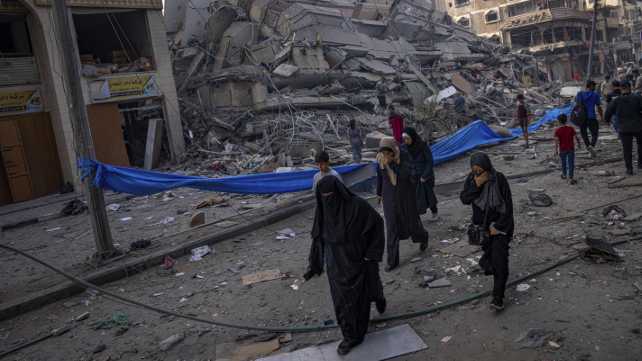Gaza: After months of stalemate, Israel and Hamas are edging closer to a ceasefire to end their 14-month conflict, with renewed mediation by officials from the U.S., Qatar, and Egypt showing growing willingness from both sides to reach an agreement.
In a key development, Hamas officials have expressed readiness to show more “flexibility” regarding the timing of an Israeli troop withdrawal from Gaza. Israel’s defense minister, Israel Katz, stated on Monday that a deal is now closer than ever.
Officials from all sides have warned that critical details still need to be finalized. However, there is a growing sense of optimism that has been absent for months.
Hamas got weak?
The shift in sentiment seems to stem from several factors: Israel has dealt huge blow to Hamas throughout the war, the group is increasingly isolated following Hezbollah’s ceasefire with Israel, and Iran, a key supporter of both groups, has faced setbacks, including the fall of its close ally, Syria’s Bashar Assad.
In the U.S., both the outgoing Biden administration and the incoming administration of President-elect Donald Trump have signaled they want a deal completed before the Jan. 20 inauguration.
According to Egyptian and Hamas officials, the agreement would take place in phases and include a halt in fighting, an exchange of captive Israeli hostages for Palestinian prisoners, and a surge in aid to the besieged Gaza Strip. Israel says Hamas is holding 100 hostages — over one-third of whom are believed to be dead.
Here is a closer look at the emerging deal, according to the officials, who spoke on condition of anonymity because they were discussing closed negotiations.
Preliminary ceasefire
The first phase would last from six to eight weeks. During that time, Hamas would release some 30 hostages – roughly half of those believed alive. They include three or four dual U.S.-Israeli citizens.
Israel would release hundreds of Palestinian prisoners, including as many as 100 who are serving long sentences for alleged involvement in bloody attacks.
Increased aid
The deal calls for a massive increase in aid to Gaza, which has plunged into a humanitarian crisis during the 14-month war. An estimated 90% of Gaza’s 2.3 million people have been displaced, in many cases multiple times, and aid workers report severe hunger across the territory.
This is expected to include a reopening of the territory’s Rafah crossing with Egypt, which has been closed since Israeli ground troops invaded the southern border town in May. The crossing is especially important because it is the primary exit point for Palestinians in Gaza who want to travel abroad, and the only one not controlled by Israel.
Mediators say they are considering a return to a 2005 agreement that allowed the internationally recognized Palestinian Authority to operate the crossing with European Union observers. That agreement collapsed when Hamas seized control of Gaza in 2007 and expelled the Palestinian Authority forces.
Israeli army troops | image source: AP
Israeli troop withdrawals
During the first phase, Israeli troops would withdraw from some Palestinian population centers, allowing many Palestinians to begin returning home. But Israeli troops wouldn’t leave Gaza altogether at this stage. They would remain along the Philadelphi corridor – a strategic strip of land along Gaza’s border with Egypt.
Ending the war
During the initial ceasefire, the sides would continue negotiations on a permanent agreement, to include an end to the war, full withdrawal of Israeli troops, and release of remaining hostages and bodies held by Hamas.
Talks would begin on final arrangements for Gaza, including who would govern the territory and plans for rebuilding the destruction.
(with agency inputs)
Israel and Hamas Move Closer to Ceasefire Deal, This is How it May Finally Look world-news World News | Latest International News | Global World News | World Breaking Headlines Today




